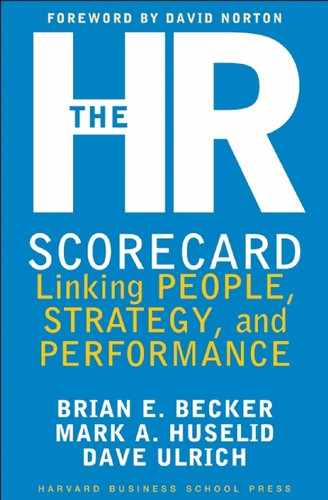Foreword
BOB KAPLAN AND I FIRST INTRODUCED the idea of a Balanced Scorecard in a 1992 Harvard Business Review article.1 Since that time we, and our consulting organization, have had the opportunity to design Balanced Scorecards in more than 200 companies. These designs always start with the same simple question, What is your strategy? This experience has given us far reaching insights into the ways that executive teams think about strategy and their organizations. The typical executive team has a high degree of awareness and consensus around the financial strategy, as well as the priorities for operational process improvement. They typically have limited consensus around customer strategies (i.e., who are the target segments, what is the value proposition), although this has improved in recent years. But the worst grades are reserved for their understanding of strategies for developing human capital. There is little consensus, little creativity, and no real framework for thinking about the subject. Worse yet, we have seen little improvement in this over the past eight years.
The greatest concern here is that, in the New Economy, human capital is the foundation of value creation. (Various studies show that up to 85 percent of a corporation’s value is based on intangible assets.) This presents an interesting dilemma: The asset that is most important is the least understood, least prone to measurement, and, hence, least susceptible to management. Clearly, we are at a watershed. As a new economic model ripples through the economy, a new science of management is needed. In an economy where value creation is dominated by human capital and other intangible assets, there can be no better starting point for this new science than with the measurement of human resource strategies. The HR Scorecard does just that and provides an important step forward in our ability to manage strategy.
Several facets of the book will make lasting contributions. First, the development of causal models, which show the relationship of HR value drivers with business outcomes, takes the Balanced Scorecard to the next level of sophistication. Second, the research into the drivers of high-performance HR organizations gives executives a framework with which to build strategies for human capital growth. And finally, their insights into the competencies required by HR professionals lay the groundwork for an organization that can deliver on the promise of its measurement systems.
We can’t manage something that we can’t describe. Measurement is the language used to describe organizations and strategy. Through the frameworks, research, and cases encompassed in this work, the authors have given us a new generation of tools to measure and manage the creation of human capital. The HR Scorecard should be essential reading for the New Economy manager.
DAVID NORTON
BOSTON, MASSACHUSETTS
